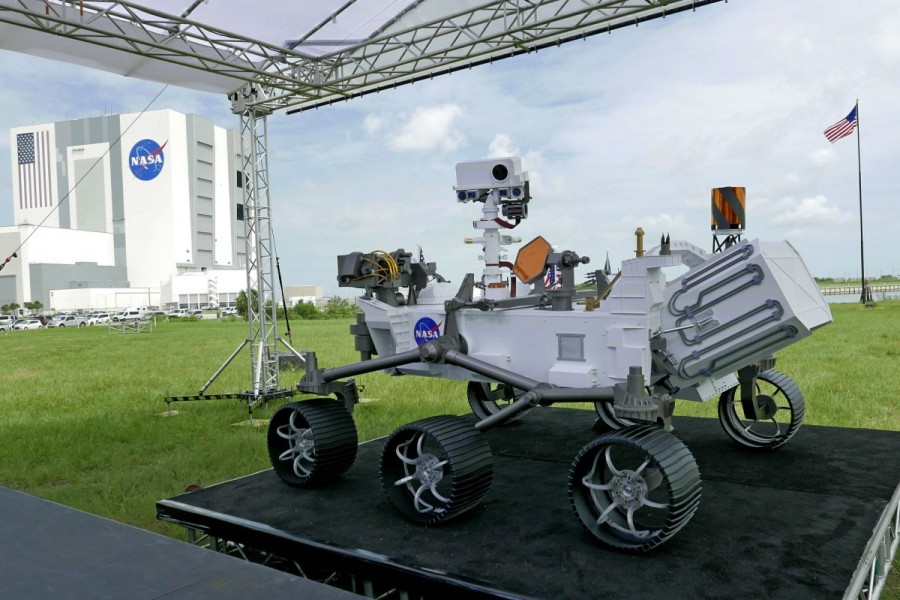NASA has launched its new Mars rover, Perseverance, on a six-month journey to the Red Planet as part of an ambitious, long-range project to bring the first Martian rock samples back to Earth to be analysed for evidence of ancient life, reports AP.
The biggest, most sophisticated Mars rover ever built — a car-size vehicle bristling with cameras, microphones, drills and lasers — blasted off on Thursday morning.
NASA’s Perseverance rode a Atlas V rocket into a clear morning sky in the world’s third and final Mars launch of the summer.
NASA’s science mission chief, Thomas Zurbuchen, pronounced the launch the start of “humanity’s first round trip to another planet.”
“There’s a reason we call the robot Perseverance. Because going to Mars is hard,” NASA Administrator Jim Bridenstine said just before liftoff. “In this case, it’s harder than ever before because we’re doing it in the midst of a pandemic.”
The overall cost has been estimated more than $8 billion.
The plutonium-powered, six-wheeled rover will drill down and collect tiny geological specimens that will be brought home in about 2031 in a sort of interplanetary relay race involving multiple spacecraft and countries.
China and the United Arab Emirates got a head start last week, but all three missions should reach their destination in February after a journey of seven months and 300 million miles (480 million kilometres).
The US, the only country to safely put a spacecraft on Mars, is seeking its ninth successful landing on the planet, which has proven to be the Bermuda Triangle of space exploration, with more than half of the world's missions there burning up, crashing or otherwise ending in failure.
China is sending both a rover an orbiter. The UAE, a newcomer to outer space, has an orbiter en route.
It’s the biggest stampede to Mars in spacefaring history.
The opportunity to fly between Earth and Mars comes around only once every 26 months when the planets are on the same side of the sun and about as close as they can get.
Launch controllers wore masks and sat spaced apart at the Cape Canaveral control centre because of the coronavirus outbreak, which kept hundreds of scientists and other team members away from Perseverance’s liftoff.
About an hour into the flight, controllers applauded, pumped their fists and exchanged air hugs and pantomimed high-fives when the rocket flawlessly broke out of orbit around the Earth and began hurtling toward Mars.
The launch went off on time at 7:50am despite a 4.2-magnitude earthquake 20 minutes before liftoff that shook the Jet Propulsion Laboratory.
Perseverance will aim for treacherous unexplored territory: Jezero Crater, riddled with boulders, cliffs, dunes and possibly rocks bearing the chemical signature of microbes from what was once a lake more than 3 billion years ago.
The rover will store half-ounce (15-gram) rock samples in dozens of super-sterilized titanium tubes.
It also will release a mini helicopter that will attempt the first powered flight on another planet, and test out other technology to prepare the way for future astronauts.
That includes equipment for extracting oxygen from Mars' thin carbon-dioxide atmosphere.
Two other NASA landers are also operating on Mars: 2018′s InSight and 2012′s Curiosity rover. Six other spacecraft are exploring the planet from orbit: three from the US, two from Europe and one from India.


